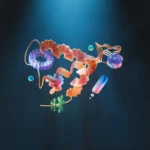Discover how RNA-based technologies in medicine are revolutionizing disease treatment. Learn about their impact, challenges, and future implications.

In the rapidly evolving landscape of healthcare, few innovations have captured our attention and imagination quite like RNA-based technologies. These groundbreaking approaches are redefining how we approach disease diagnosis and treatment, offering hope and new possibilities in areas such as infectious diseases, cancer, and genetic disorders. But what exactly makes RNA such a powerful player in modern medicine? Let’s explore the transformative potential of RNA-based innovations.
Read Also – 👉👉Osteoporosis Management and Fracture Prevention Strategies: 5 Key Insights You Need👈👈
The Role of RNA: A Brief Overview
Understanding RNA and Its Genes
Ribonucleic acid, or RNA, is an essential molecule that serves multiple roles in biological systems. It translates genetic information from DNA into proteins, regulates gene expression, and is involved in numerous cellular processes. Think of RNA as a messenger that carries instructions from the blueprint (DNA) to the construction workers (proteins) at the cellular factory. By leveraging the properties of RNA, scientists have crafted advanced tools and therapies capable of modifying RNA to manage disease pathways. The remarkable efficacy of mRNA vaccines against COVID-19 has not only showcased the potential of RNA technologies but also accelerated research and investment in this burgeoning field.
The Evolution of RNA-Based Technologies
The evolution of RNA-based technologies is the result of decades of meticulous research in molecular biology. Unlike traditional drugs, which typically rely on small molecules or proteins, RNA therapies offer a unique advantage by directly targeting genetic material. This approach allows for a more precise control over the processes that govern protein production—an essential factor when addressing complex diseases characterized by abnormal protein expression.

Read Also – 👉👉Hypertension Kidney Damage: The Hidden Threat You Need to Know About👈👈
Diving Deeper into RNA-Based Innovations
Key RNA Technologies Shaping Medicine
- RNA Interference (RNAi): A process where small interfering RNA (siRNA) or microRNA (miRNA) silences specific genes, reducing the expression of harmful proteins, particularly helpful in various diseases.
- Antisense Oligonucleotides (ASOs): These therapies bind to specific mRNA sequences, inhibiting their translation and thereby decreasing the production of unwanted proteins, shown to be effective in disorders like Duchenne muscular dystrophy.
- mRNA Therapeutics: Beyond vaccines, this technology allows the encoding of mRNA to prompt cells to produce therapeutic proteins, countering genetic deficiencies and creating new treatment paradigms for many conditions.

Read Also – 👉👉Teen Health Australia: Alarm Bells Ring as Nearly Half of Teens Face Chronic Conditions👈👈
The Road Ahead: Challenges and Opportunities for RNA Technologies
Clinical Developments and Approvals
As of early 2024, there are over **131 RNA-based therapies** undergoing clinical trials in the United States, focusing significantly on RNAi and mRNA methods. This expanding pipeline reflects the commitment towards addressing unmet medical needs. Moreover, the FDA’s approval of more than **20 RNA-based therapies** marks a pivotal moment in the evolution of this innovative field, underscoring its growing acceptance in conventional healthcare.
Barriers to Overcome
Despite the promise of RNA-based technologies, several hurdles remain. Effective delivery of RNA molecules is a primary challenge due to their instability; they require proficient systems for successful cell targeting. Additionally, the high costs associated with developing these therapies can pose accessibility issues, particularly in underserved populations. Furthermore, the regulatory landscape is still adjusting to the speedy advancements within this realm, potentially leading to delays in getting new treatments to patients.

Read Also – 👉👉Texas Measles Outbreak 2025: Alarming Surge Hits 422 Cases👈👈
Future Prospects of RNA-Based Technologies in Medicine
Anticipated Developments
- Advances in synthetic biology and AI will enhance RNA therapy design and delivery systems, likely broadening their application spectrum.
- Collaboration across academia, industry, and regulatory agencies will be vital to navigate the complexities of RNA technologies.
- Efforts to optimize manufacturing and reduce costs may enhance the global accessibility of RNA-based therapies, ultimately improving public health outcomes.
Conclusion
To sum up, RNA-based technologies represent a paradigm shift in the realms of healthcare and molecular biology. Their ability to target genetic processes so precisely opens unprecedented avenues for disease treatment and prevention. While challenges such as delivery methods, cost effectiveness, and regulatory frameworks persist, ongoing innovations and amplified investments are expected to surmount these obstacles. As this field continues to expand, we can anticipate that RNA-based technologies will lead the charge in medical innovation, significantly impacting countless lives across the globe.
FAQs
What are RNA-based technologies?
RNA-based technologies refer to therapeutic approaches that leverage ribonucleic acid (RNA) to treat diseases by targeting genetic material—a significant shift from conventional drug therapies.
How do RNA-based therapies work?
RNA-based therapies can work by silencing harmful genes or prompting cells to produce proteins essential for normal function, thus helping to rectify genetic disorders.
What diseases are RNA-based technologies used to treat?
RNA-based technologies have potential applications in various medical conditions, including infectious diseases, cancer, and inherited genetic disorders.
Related Videos
Read Also –
This article is meant for informational purposes only and does not substitute professional medical advice.
Read Also –
| https://norgenbiotek.com/blog/exploring-power-rna-based-technologies |
| https://pmc.ncbi.nlm.nih.gov/articles/PMC10620767/ |
Hey! I hope you enjoyed reading this! If you did, could you do me a small favor and hit the like button? It would mean a lot to me and help me reach more people. Thank you so much! Got any thoughts on this post? Drop them in the comments below!
How many stars would you give for my effort?





